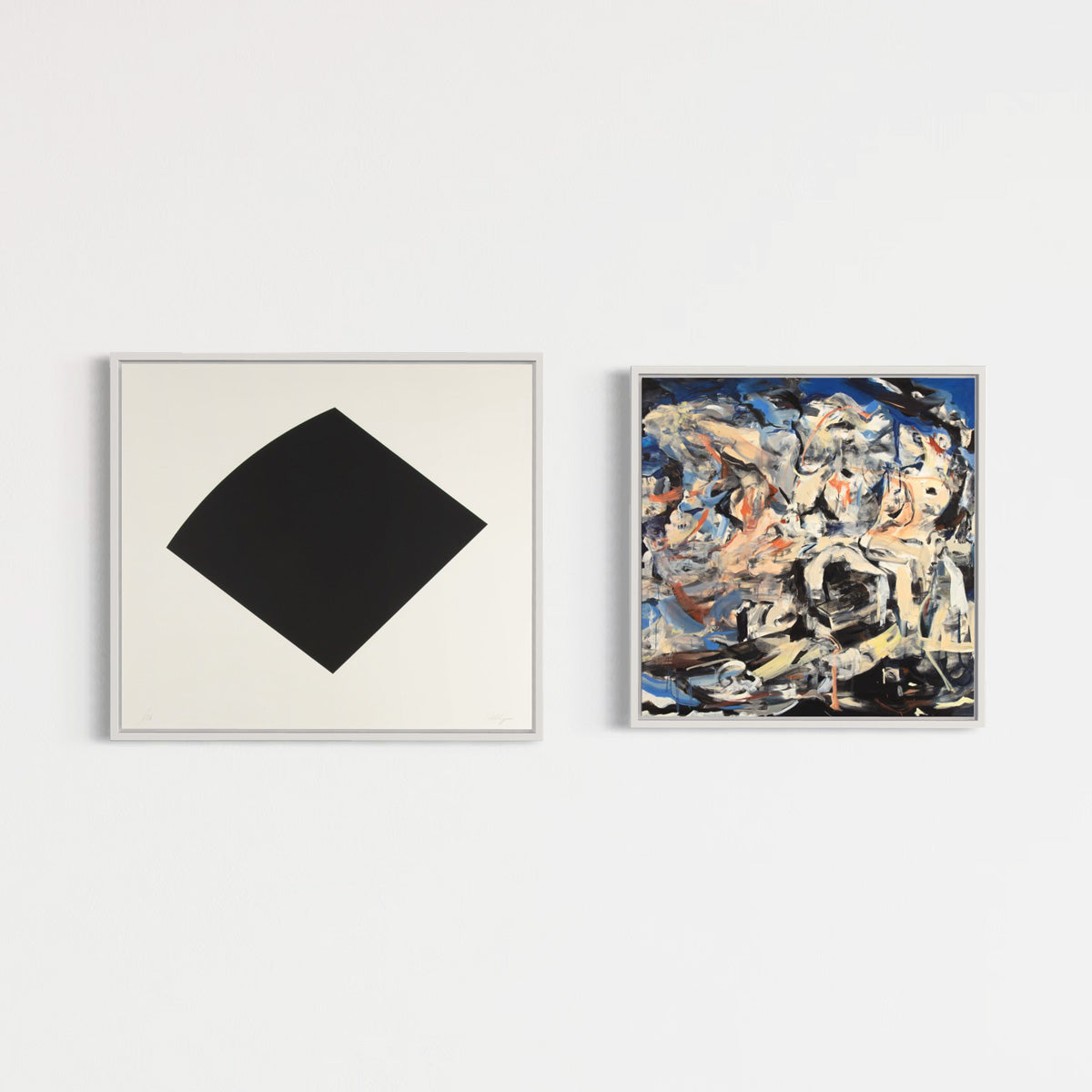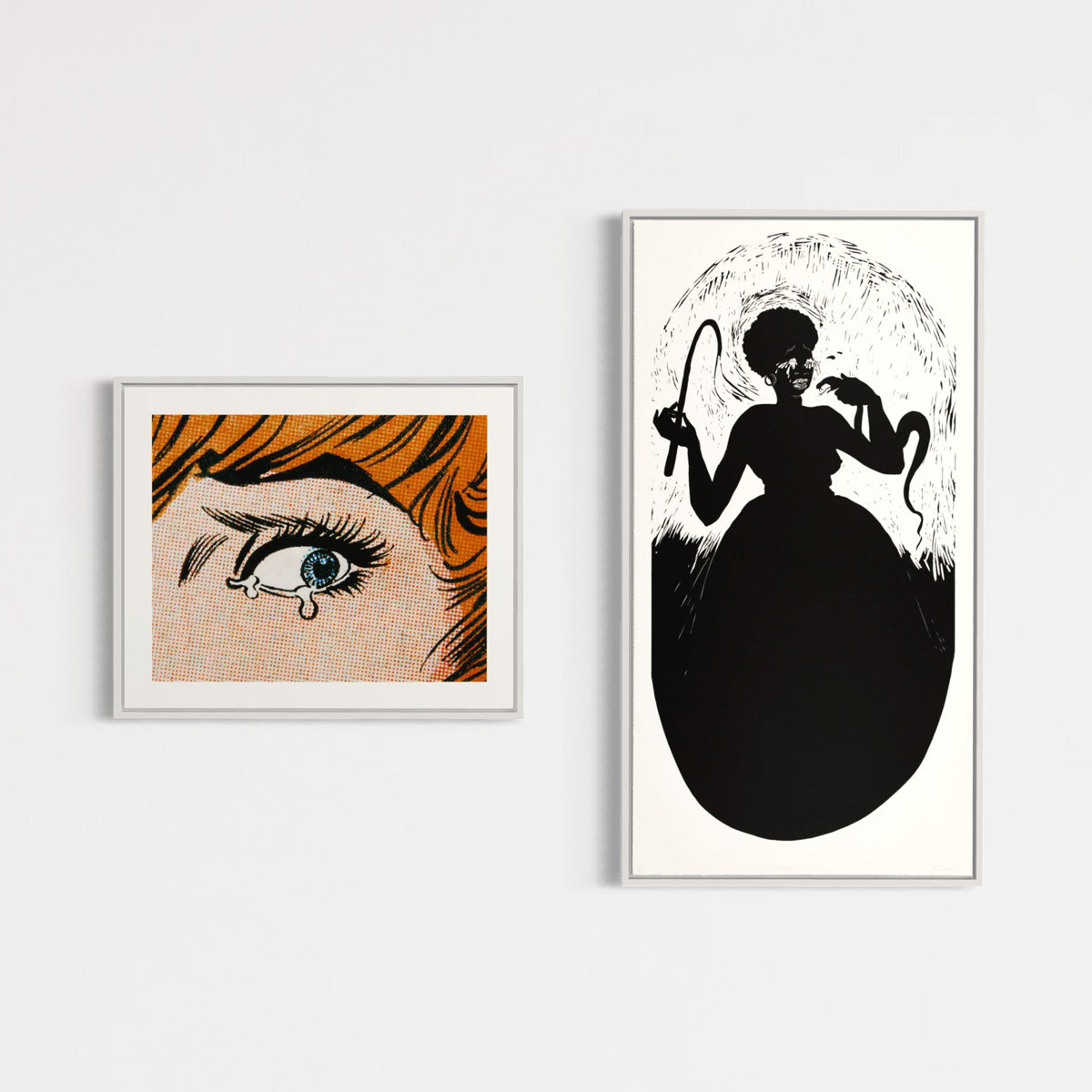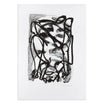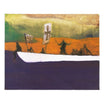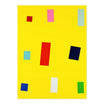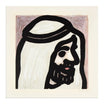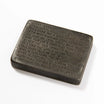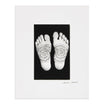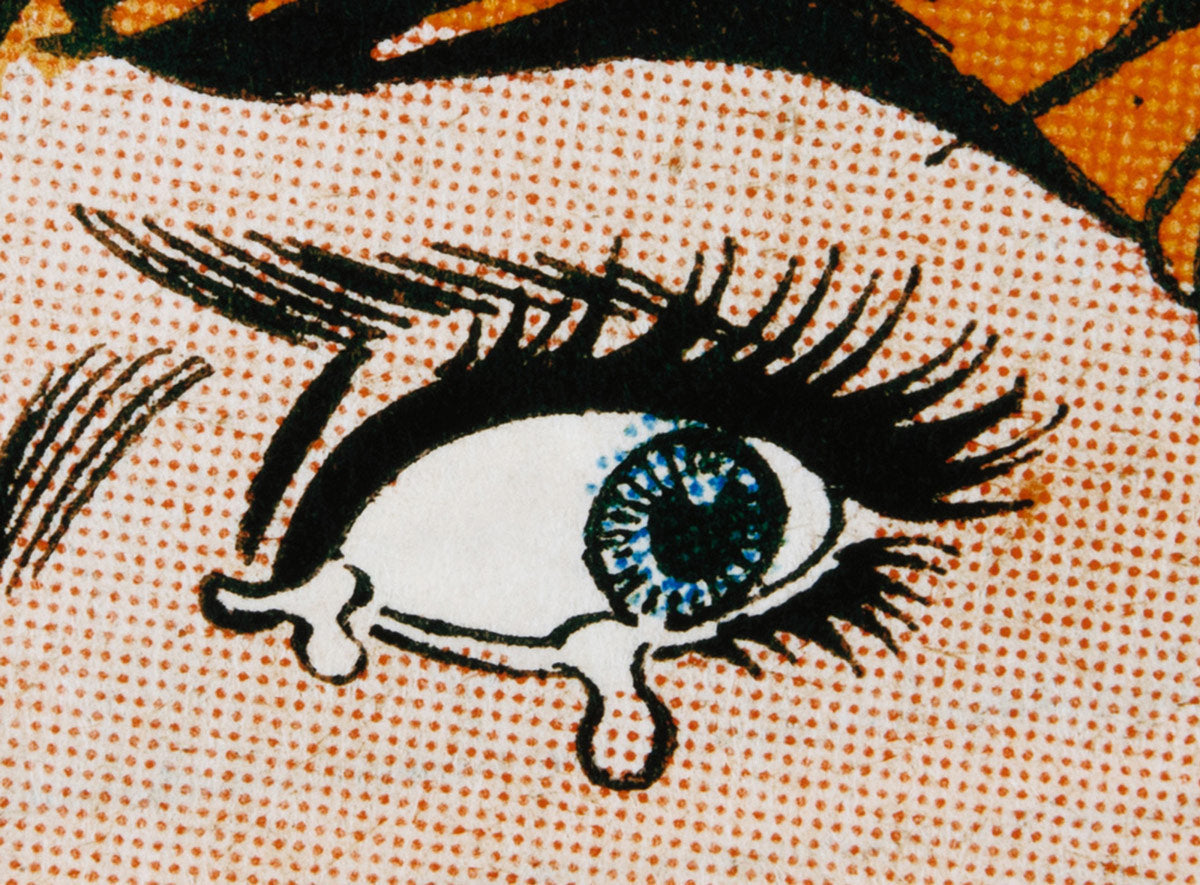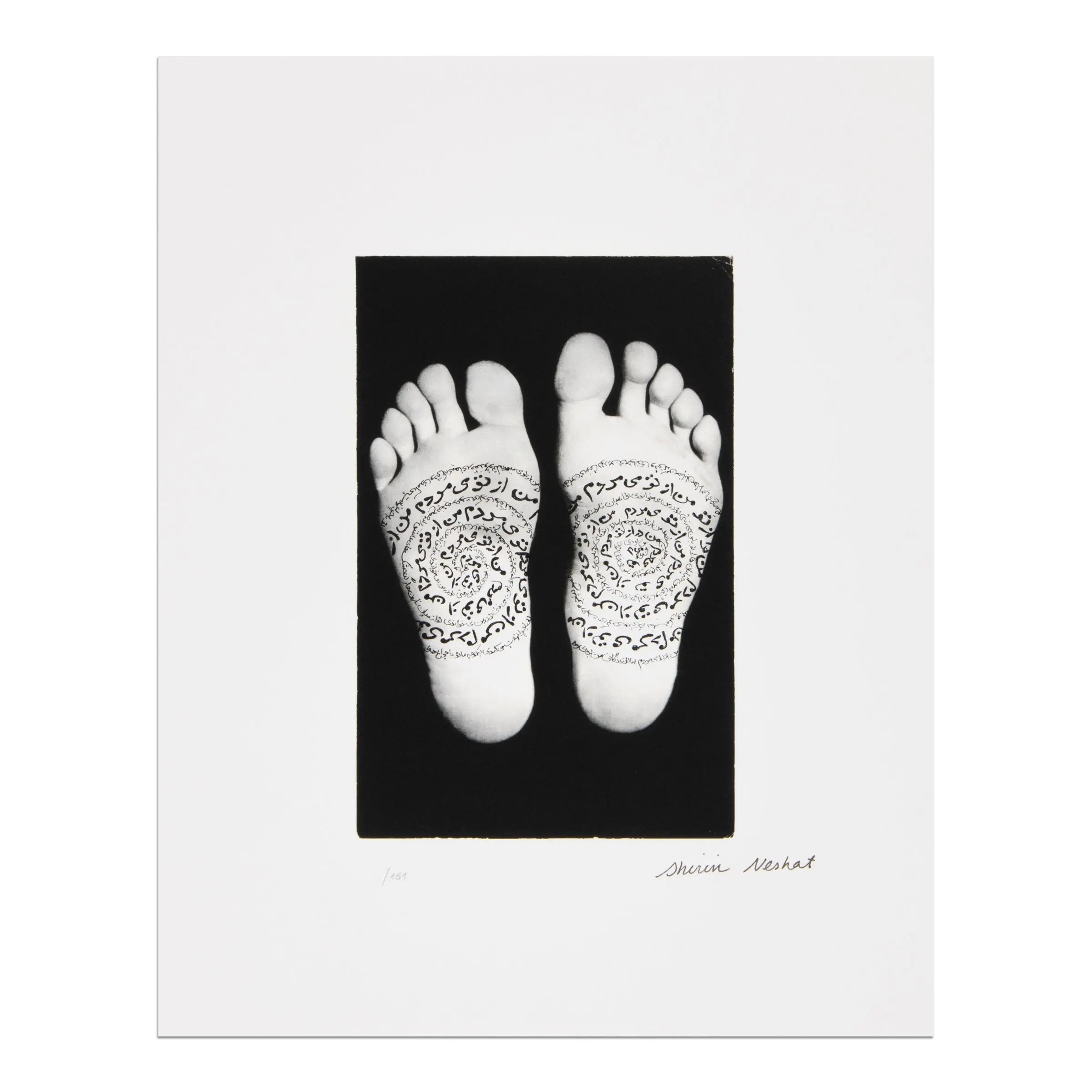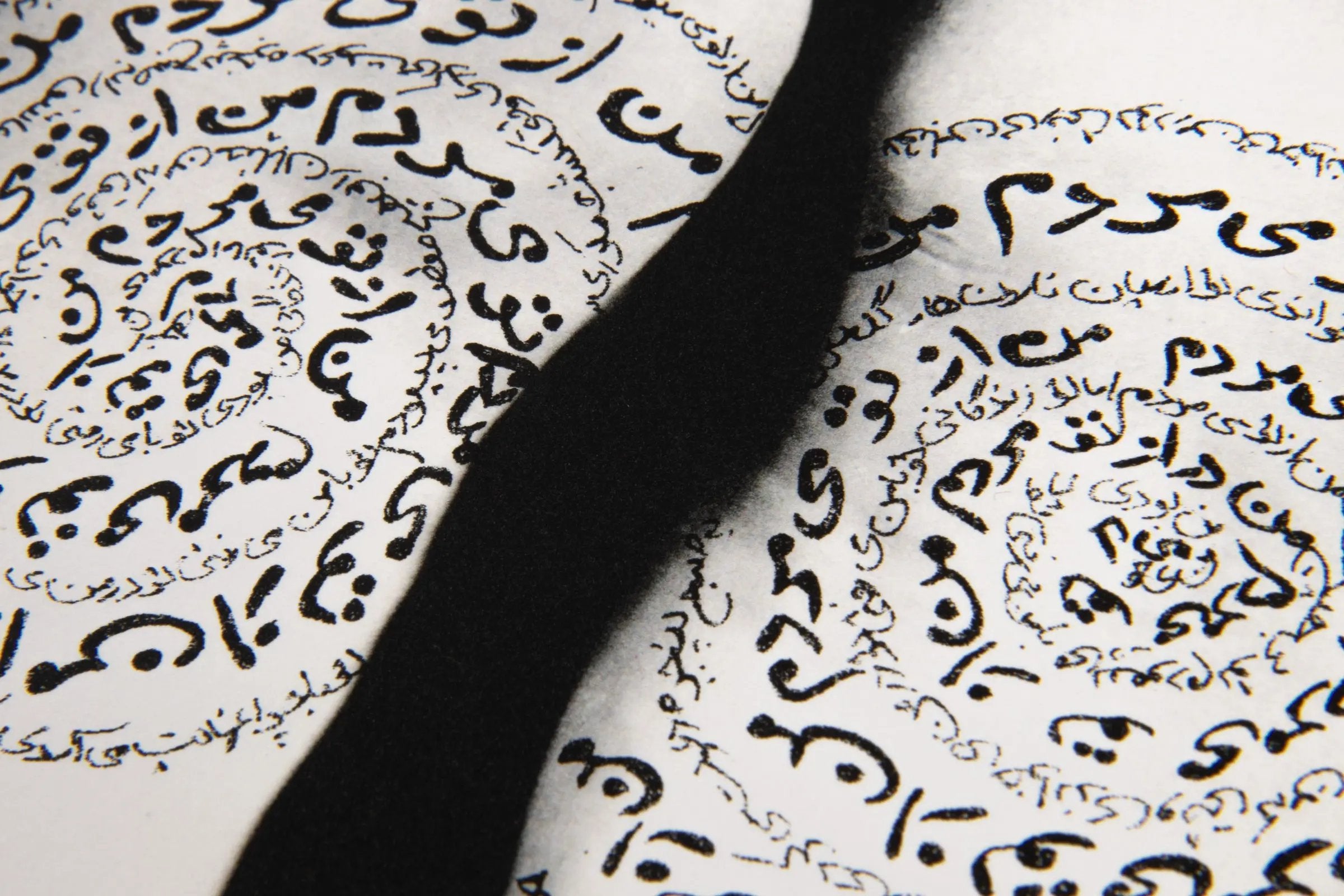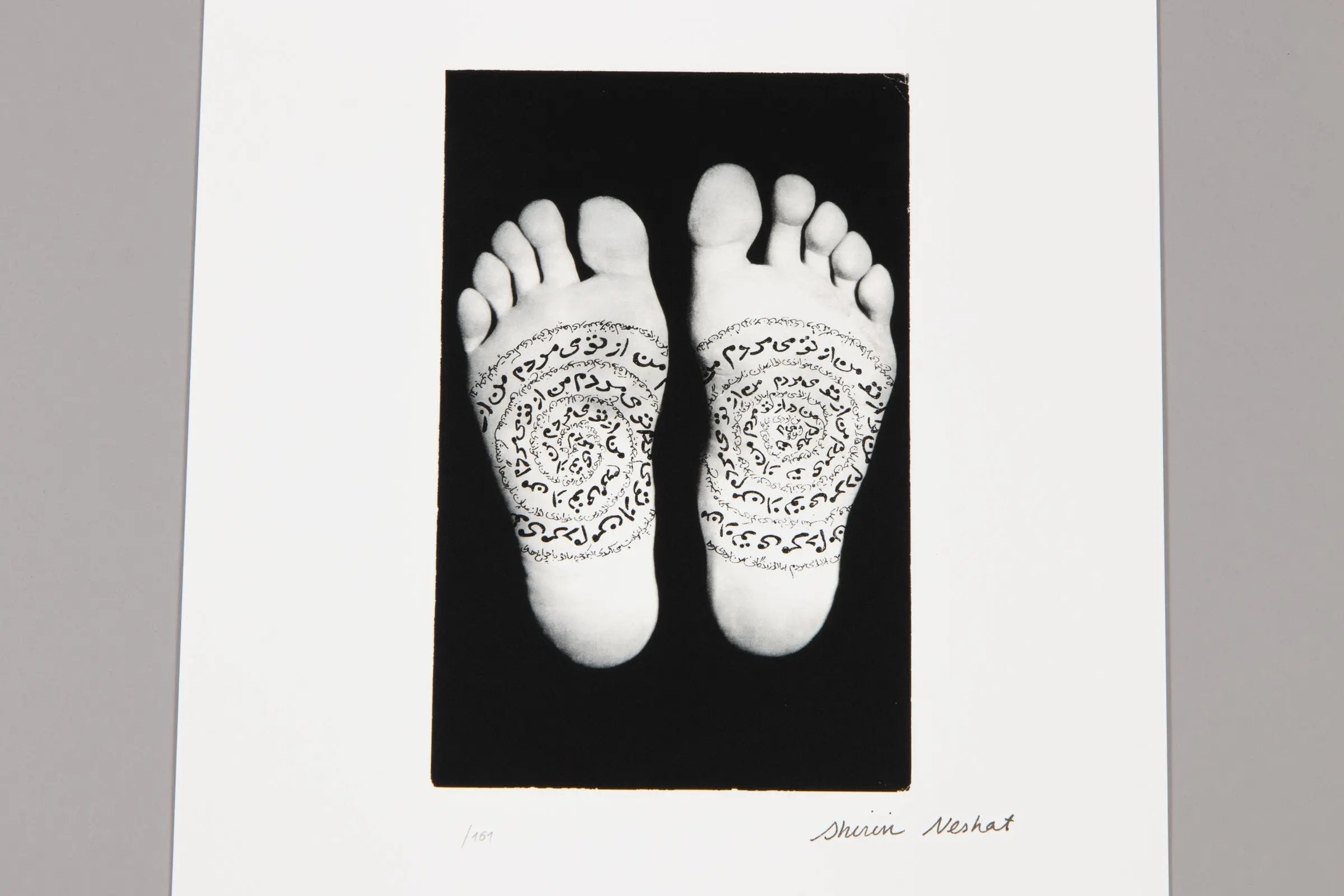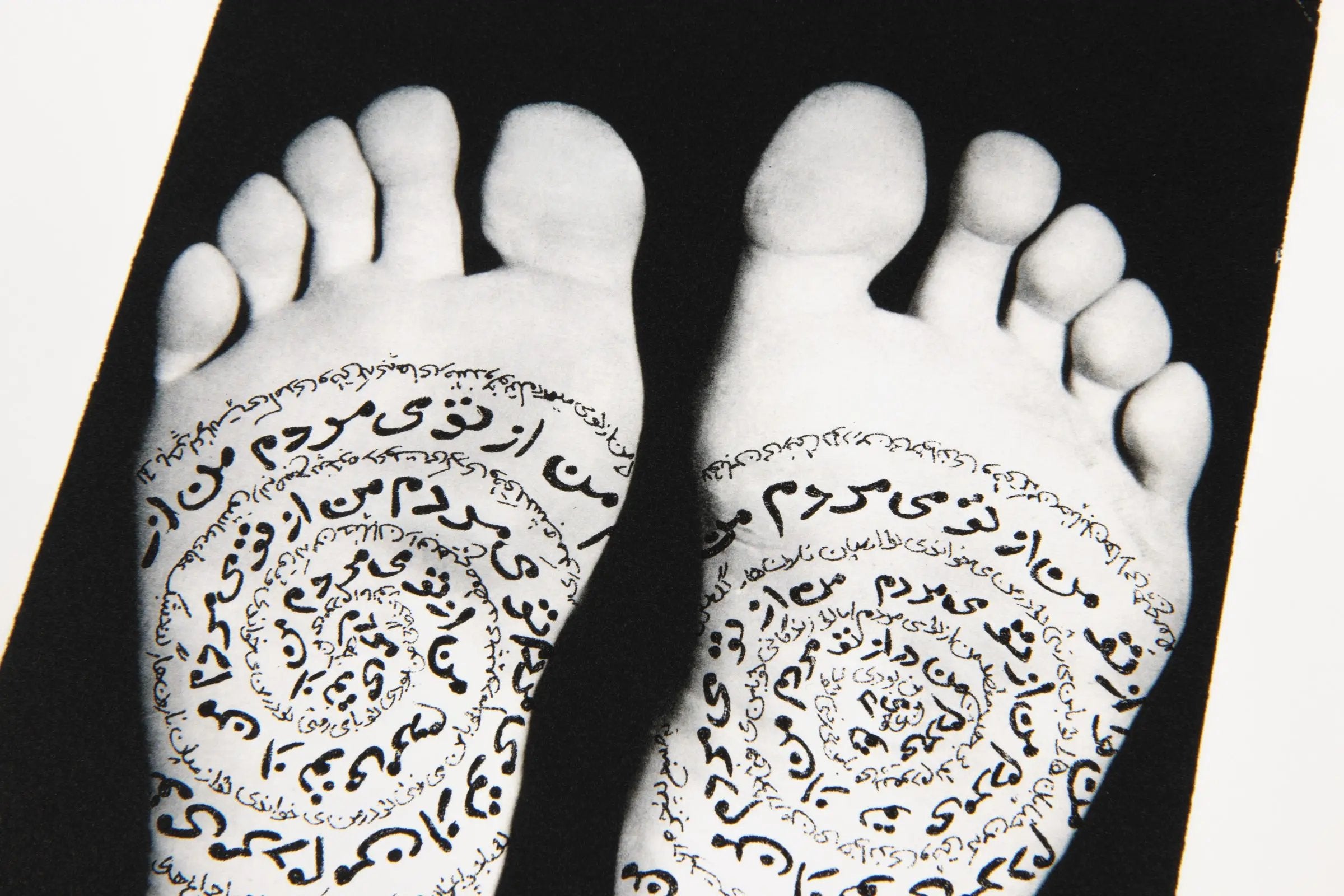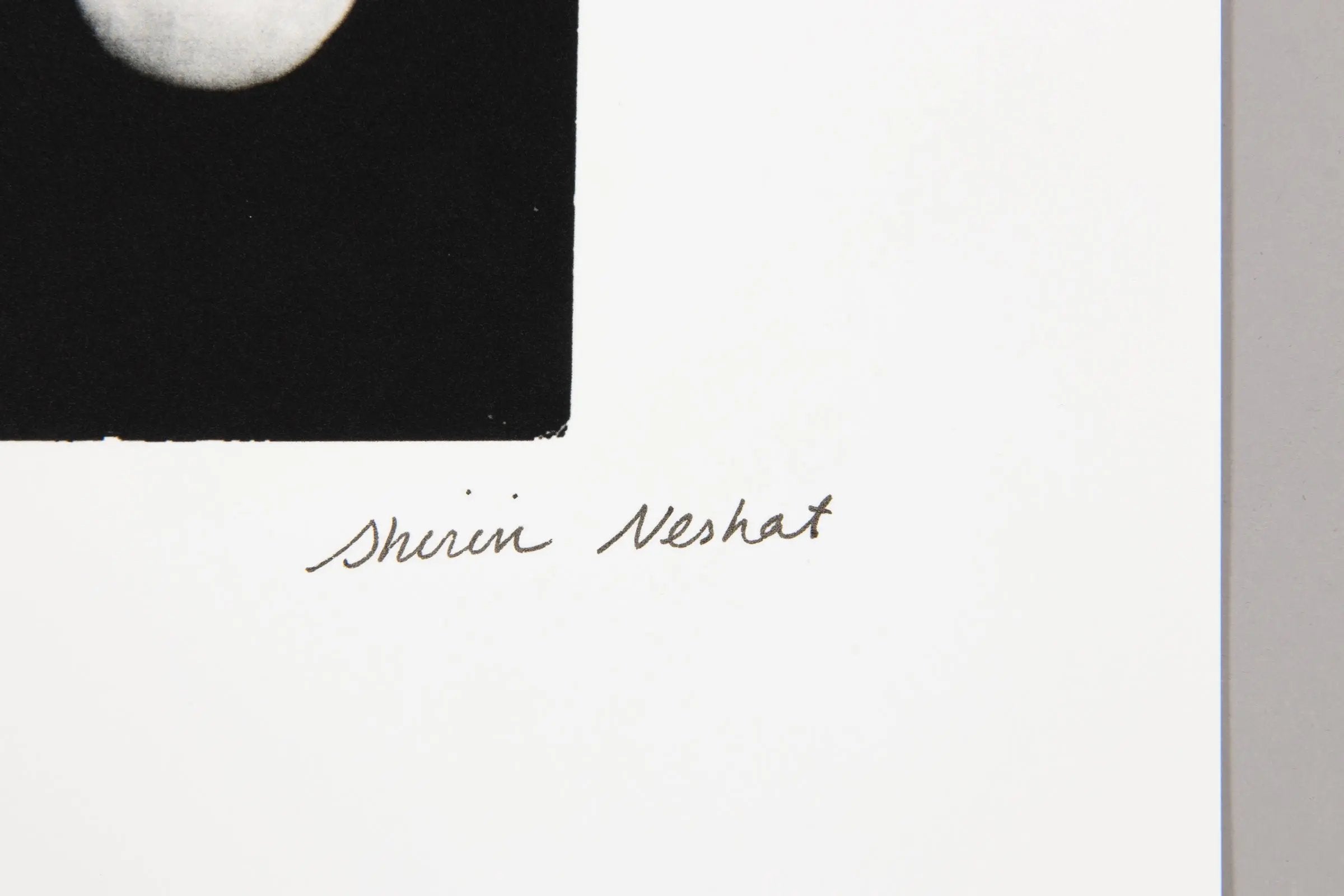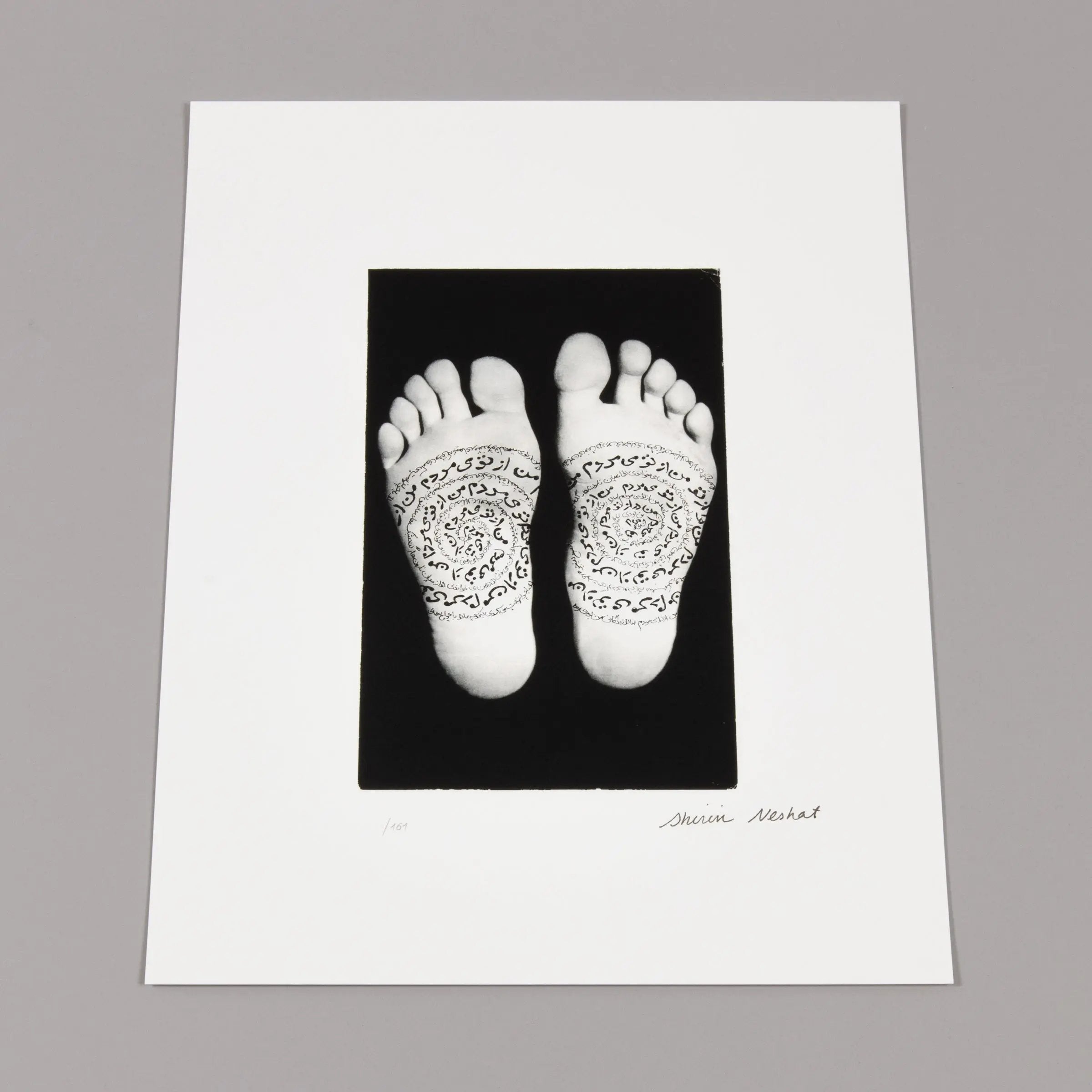About Shirin Neshat
Shirin Neshat stands as a pioneering figure in contemporary art, renowned for her poignant exploration of themes such as identity, gender, politics, and culture. Born in Iran in 1957, Neshat’s work often reflects her own experiences of exile and displacement, as well as broader societal issues within the context of her native country.
One of her most iconic series, Women of Allah, garnered international acclaim for its stark black-and-white portraits of veiled women adorned with calligraphy. These evocative images serve as a powerful commentary on the complex interplay between femininity, Islam, and resistance. Shirin Neshat‘s use of calligraphy, traditionally associated with male dominance in Islamic art, subverts gender norms and challenges viewers to reconsider preconceived notions of power and agency.
Throughout her career, Neshat has utilized various mediums including photography, video installations, and film to convey her artistic vision. Her award-winning film Women Without Men (2009) poetically intertwines the narratives of four women against the backdrop of Iran’s tumultuous political history, offering a nuanced exploration of female subjectivity and societal constraints. Despite grappling with themes of oppression and censorship, Shirin Neshat‘s work possesses a sense of resilience and defiance. Her art serves as a potent catalyst for dialogue and reflection, inviting viewers to confront their own perceptions of identity and freedom.
Neshat’s influence extends far beyond the realm of art, as she continues to advocate for social justice and human rights. Her unwavering commitment to amplifying marginalized voices has earned her widespread admiration and numerous accolades, including the prestigious Golden Lion award at the Venice Biennale in 1999.




